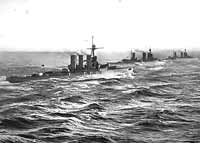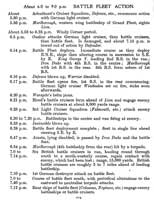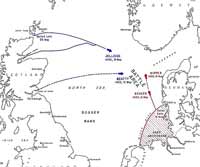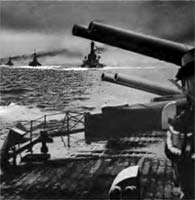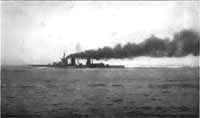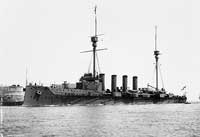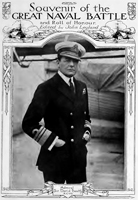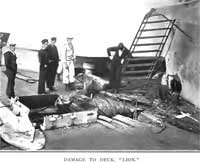
'THE GREAT WAR', 'THE WAR TO END WAR', 'WORLD WAR 1'
'What passing-bells for these who die as cattle?
- Only the monstrous anger of the guns.'
from 'Anthem for Doomed Youth'
by Wilfred Owen
31st MAY - 1st JUNE 1916
THE NAVAL SEA BATTLE
OF JUTLAND
A Little Background Although millions of tons of allied and enemy shipping, were lost to both submarine and surface attacks in the war, as each tried to blockade the other's ports and prevent mercantile shipping from operating, there was only one major sea battle - that of the Battle of Jutland. Historically, Britain had been the dominant force at sea but, for a number of years, Germany had been building a navy to challenge this dominance. In 1916 Britain's navy was still, numerically, the larger but Germany also made more use of submarines. Neither nation was prepared to 'risk all' in an all-out battle unless the odds could be stacked in their favour. Scapa Flow, in the Orkneys, was the main naval base for the Grand Fleet in WW1, another major base was at Rosyth on the Firth of Forth in Scotland. The German Imperial Fleet was safely protected in the North Sea port of Willhemshaven Germany secretly planned to lure a significant part of the British Grand fleet out of its safe havens, at Rosyth and Scapa Flow, leading them into a trap in which the German fleet could inflict substantial damage. Unbeknown to the Germans, British intelligence had intercepted signals outlining the plan and decided to pre-empt the German attack. Admiral Sir David Beatty's battlecruiser squadron came out of port earlier than expected by the Germans, passed the submarine positions before they were prepared, came upon Vice-Admiral Hipper's scouting group of battlecruisers and engaged them in battle. In the meantime, knowing from the intercepted signal that this was a major operation, on the part of Germany, Admiral Jellicoe had sailed with the Grand fleet to rendezvous with Admiral Beatty. He was still some distance away when Admiral Beatty engaged with the German battlecruisers. The Battle lasted from the afternoon of 31st May, through the night into June 1st, 1916. With returning light it was realised that the German fleet had slipped away, under cover of darkness, smokescreens and mist, and were well on their way back to port. Admiral Jellico took the controversial decision not to follow in pursit of the German fleet, and to return the British fleet to home ports. The British Fleet had numbered 151 fighting ships against the German total of 99 ships. During the Battle, Britain sufferd the loss of 3 Battle Cruisers, 3 armoured cruisers and 6 destroyers - a total of 14 ships. Over 6,000 men died, almost 700 wounded and almost 200 captured. The British losses, although serious, weren't enough to threaten Britain's dominance on the seas. The German fleet didn't leave their base again, in force, for the remainder of the war. The result was inconclusive and contested. Both sides claimed it as a victory. The British claim was based on the fact that when darkness fell the German Fleet broke through the British line and ran for port in covering mist. The German claim to victory was based on the greater losses suffered by the British Fleet. The German intention had been to destroy a good percentage of the British fleet, incapacitating it and thereby allowing merchant ships to operate. The British losses, although serious, were not great enough to break Brtain's blockade of German and enemy ports. Germany, still unable to blockade British ports successfully, returned to all-out use of the submarine to attack allied shipping after the Battle of Jutland. |
|
||
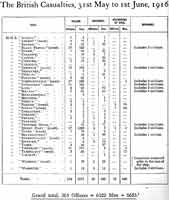 List of Local Casualties & numbers of all British Casualties: Ships & Crew Page from: 'The Fighting at Jutland'' Pub 1921 |
|||
|
|
|
|
If you have Oldham and District items that we can include on our website, PLEASE visit the information page to find out how you can help
